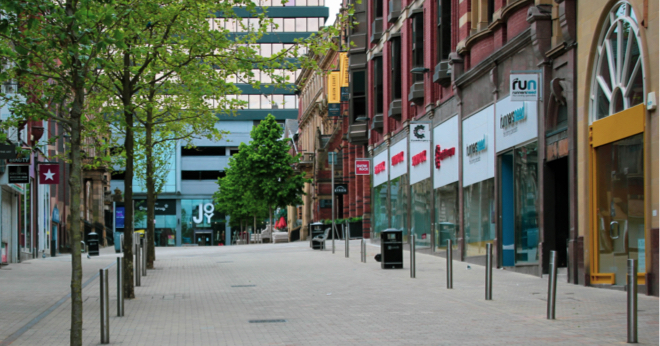How have teaching and learning changed in recent years, and how has this affected the spaces where teaching and learning happen (huddle spaces, classrooms, lecture halls, practical spaces and labs, etc)?
The pandemic accelerated technology adoption in Higher Education. The rate in which technology was deployed in Lecture theatres, seminar rooms, general teaching spaces and smaller huddle areas grew quickly, as the need to deliver remote and hybrid lectures was required. Moving forward, the technology is used and adopted for in person lectures now and future proofed should a hybrid model be required. Most spaces now have VC equipment in them such as microphones, cameras and interactive displays.
What are the main technology requirements of learning spaces today, and how are these usually met?
Teaching spaces need to be flexible. They need to have the correct set up for in person and hybrid teaching or meetings. Most institutions are setting up Microsoft Team Rooms for quick meeting start and join.
What's the latest thinking on the best ways to support flipped (student-led) and blended (in-person plus remote) learning?
Smaller, Collaborative areas of 4-6 people with a screen at the end of the desk or pod harbour collaborative student sessions. They can share content from their own devices and collaborate effectively. This can also be scaled for larger spaces with technology to support BYOD (Bring Your Own Device).
Are there any new, specialised or unusual solutions (that educational institutions may not be very aware of) that could improve learning spaces and the learning experience?
X
Do different stakeholders (professors/teachers, students, AV technicians, etc.) have very different requirements, and how can institutions reconcile these so that their learning spaces provide the best experience and outcomes for all?
Yes, and this is something I experience often. The requirements of the academic and IT/Networking teams are different, and there is a balance to be struck between enhancing teaching and learning with technology, and it being secure and able to be managed by IT Teams.
Is there a big difference between learning spaces in schools (age 5-18) and higher education (age 18+)? What can these two sectors learn from each other?
Yes, university spaces are multi-modal and used in a number of ways, by many different people be it staff or students. Lectures occur all over campus, whereas a teacher in a school stays in that classroom all year so can personalise their experience. The university teaching space needs to be easy to use by many different people with varying abilities.
Is it better to standardise learning spaces across the organisation, or to custom-design each one? What are the pros and cons of a "one size fits all" versus bespoke approach, and of mass roll-outs compared with one-offs? Similarly, is it better to standardise on a small number of products and brands, or to adopt a best-of-breed approach?
Universities mainly standardise on equipment and scale up or down depending on the room requirements. There is not a one size fits all, but there is a standard that universities adopt to make managing and supporting easier. I think universities deploy a mixture of both bespoke design and equipment to suit, and a general approach for standard teaching spaces.
Educational institutions tend to have small AV technical teams. So how can learning spaces be designed to minimise the amount of technical support and maintenance required?
As above, spaces need to be equipped with the correct equipment for the purpose of that room, but flexible enough to be rolled out across multiple locations.
What other issues and challenges do educational institutions face when equipping learning spaces (if not covered above), and how can these best be tackled; at the concept and design stage, during implementation, after implementation?
Training for academic staff post installation, allowing users to be familiar with the technology and how to use it.
Where is the real innovation in learning spaces, what's new and what are the hot topics, now and for the future (if not already covered)?
Using interactive displays, collaborating effectively both in room and remote. Cyber Essentials, MTR’s, BYOD.
To speak with our FEHE specialist team, please arrange a demonstration here.
Otherwise, if you would like to watch a tour of our digital ecosystem, you can do so here.
